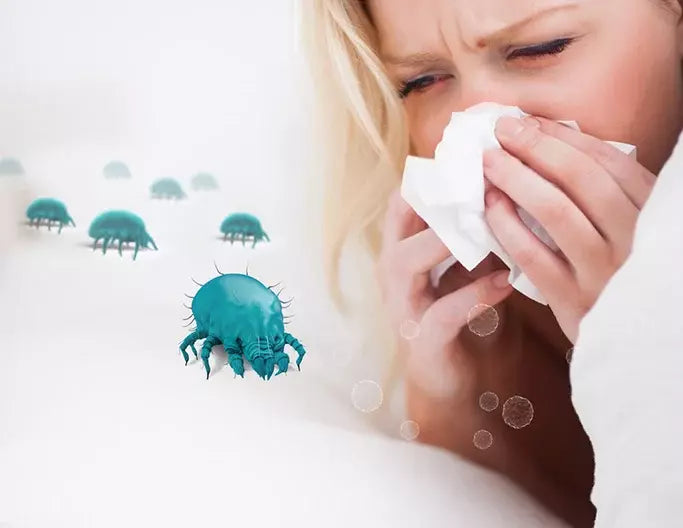
The allergy pyramid: how to stay below your symptom threshold

Many people think that they are allergic to dogs OR pollen OR dust mites. But if you’re allergic to one thing, you’re likely allergic to others. It’s only when a certain level of exposure is reached that symptoms become problematic. The key to staying under that threshold? Eliminating the allergens that are simple to get rid of.
Types of allergens: continuous vs. seasonal
To experience allergy symptoms, you have to be exposed to allergens. This is why symptoms of pollen allergy peak in the spring and summer and recede in the fall and winter – when most plants and flowers stop blooming. Pollen is a seasonal allergen, and there’s no simple way to avoid it – except by staying inside. Who wants to do that?
Allergy to cats, dogs or other animals depend on how often you come into contact with their dander, or dead skin cells. But if you love animals and want to keep pets in your life, if you’re allergic to pet dander, you’ll simply have to put up with the effects of continuous exposure.
Similarly to pet dander, dust mites create allergens that are continuously present in our homes. Simply by sleeping in our beds, we come into close contact with up to two million of these little arachnids and their cast-off shells and droppings – for around eight hours per night.

Introducing the allergy pyramid
All allergy sufferers are different when it comes to their sensitivity to allergens. For example, exposure to even a low concentration of pollen in the air can send some allergic people running for the antihistamines, while others can tolerate high concentrations with barely a runny nose. This exposure threshold effect can be visualised in the form of a pyramid:

However, few people are only allergic to a single allergen – and the effects of multiple allergens add up. Piling up exposure to pollen, dogs and dust mites all at once, for example, might push even people with low sensitivity over the symptom threshold and into sneezing, wheezing, sleep-deprived misery:

Quick fix: tackle the allergens that are easy to get rid of
Instead of treating the symptoms of allergy using expensive, long-term therapies or over-the-counter medications, the key to reducing and even eliminating symptoms is to reduce your exposure to the allergens themselves.
In the case of pollen, this is close to impossible without living in a hermetically sealed bubble. And if you’re a pet lover allergic to cat dander, bidding farewell to Fluffy may be too heart-wrenching to bear.
"By controlling one allergy, you may be able to successfully avoid the detrimental effects of your other allergies"
But if you also suffer from dust mite allergy, eliminating the source of the allergens (the dust mites themselves) might just keep you below your symptom threshold. In short: by controlling one allergy, you may be able to successfully avoid the detrimental effects of your other allergies.

Unlike pollen, it’s possible to eliminate dust mites and get rid of their allergens – and who wants millions of creepy, crawly, skin-eating, constantly pooping dust mites around?
Not sure if you or your family member is allergic to dust mites? Complete the allergy questionnaire for more insights.

Benjamin Tillier
Benjamin Tillier has more than 18 years of international experience in various sectors. He has been active in the healthcare industry since 2011. In regular contact with dust mites allergic people as well as professors and allergy specialists, he acquired an in-depth knowledge in this field.
Related articles


